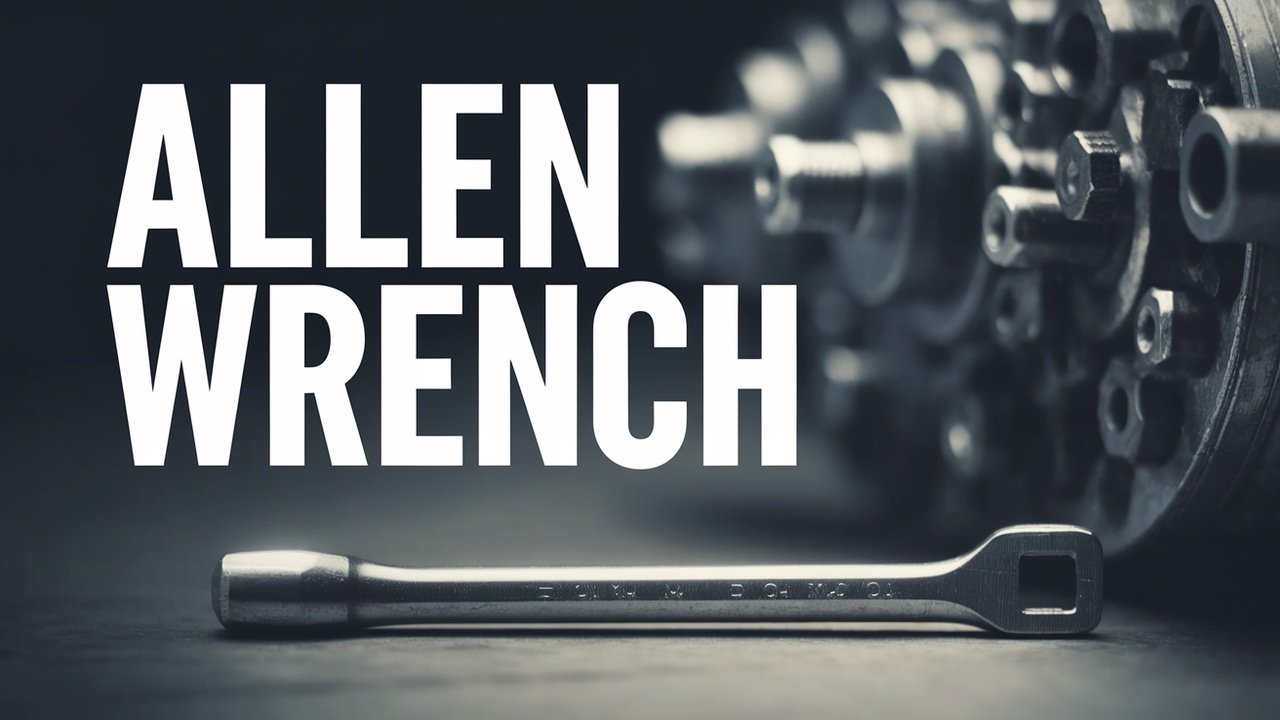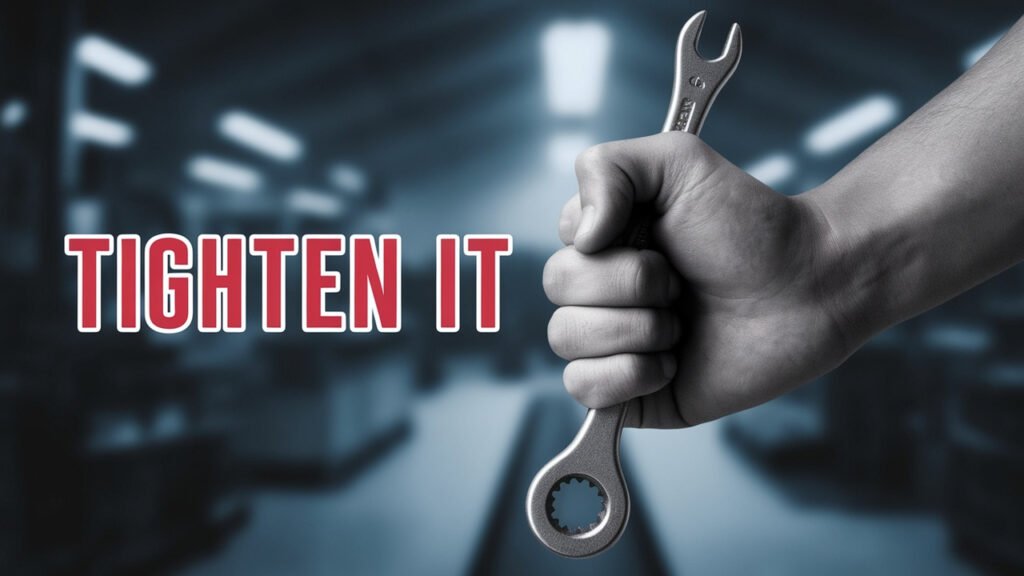Mastering the 3/32 Allen Wrench: A Small Tool with Big Impact

Introduction: The Mighty Miniature – Why the 3/32 Allen Wrench Deserves Your Attention
In the vast universe of tools, some demand attention with size, power, or complexity. Think of hulking torque wrenches, laser-guided drills, or massive socket sets.
But then, there are the unsung heroes—those understated tools that quietly perform precise, essential tasks in industries ranging from bicycle repair to aerospace engineering. One such tool is the 3/32 Allen wrench.
Also known as a hex key, the 3/32 Allen wrench may not look like much at first glance. It’s small, often fitting between your fingertips, and is usually tossed into the bottom of toolboxes or included for free in flat-pack furniture kits. But don’t let its humble appearance fool you.
This tool is a standard in metric-to-inch conversions, widely used in mechanical, electronic, and industrial work. The 3/32-inch size hits a sweet spot—large enough to apply real torque, yet small enough to fit into tight spaces where precision is key.
In this article, we’ll explore everything you need to know about the 3/32 Allen wrench—from its design and applications to materials, variations, maintenance, and industry relevance.
Whether you’re a DIYer, mechanic, engineer, or just tool-curious, this guide will help you appreciate the power of this compact yet vital implement.
1. What Is a 3/32 Allen Wrench?

A. Definition and Dimensions
A 3/32 Allen wrench is a hexagonal tool with a cross-sectional width of 3/32 of an inch (approximately 2.38 mm). It’s designed to drive bolts and screws that have a 3/32-inch internal hex socket.
The wrench typically comes in an L-shape or T-handle design, with one leg longer than the other, providing a choice between leverage and reach.
B. Common Formats
- L-Key (Standard): Most widely used, classic shape.
- T-Handle Allen Wrench: Provides better torque and comfort.
- Ball-End Allen Wrench: Allows for angled entry into screw heads.
- Folding Hex Key Set: Swiss-army-knife-style portability.
2. The Evolution of the Allen Wrench
The Allen wrench is named after the Allen Manufacturing Company of Hartford, Connecticut, which popularized the hexagonal screw and key system in the early 20th century.
The 3/32 size, in particular, became a staple in the mid-1900s when it was adopted widely in consumer electronics, bicycles, and furniture assembly.
The beauty of the hex system lies in its simplicity:
- Fewer stripped screws.
- Greater surface contact.
- Enhanced torque application.
- Easier manufacturing.
3. Practical Applications of the 3/32 Allen Wrench
You might be surprised at how often this tiny tool is needed. Below are just some of the countless uses across multiple fields:
A. Bicycles and Scooters
- Adjusting brake lever tension.
- Calibrating derailleur limits.
- Mounting accessories like lights and reflectors.
B. Electronics and PC Assembly
- Securing fan brackets and GPU supports.
- Mounting cases or water-cooling systems.
- Assembling brackets for monitors and arms.
C. Furniture Assembly
- Popular in flat-pack furniture (IKEA, Wayfair).
- Used for handle attachments and support brackets.
D. Firearms and Archery
- Scope adjustments and mounts.
- Trigger pull customization.
E. Musical Instruments
- Guitar truss rod and bridge adjustments.
- Piano pedal mechanism repairs.
F. Industrial and Aerospace Engineering
- Precision machinery where torque control is essential.
- Aircraft electronics and custom frames.
4. Materials and Manufacturing: What Makes a Quality Allen Wrench?

Not all Allen wrenches are created equal. The 3/32 Allen wrench is manufactured using a variety of materials, which can significantly impact performance and durability.
A. Common Materials
- Chrome Vanadium Steel: Affordable and durable.
- S2 Tool Steel: Extremely hard and resistant to wear.
- Carbon Steel with Black Oxide Coating: Rust-resistant and cost-effective.
- Stainless Steel: Corrosion-resistant; used in wet environments.
B. Coatings and Finishes
- Black Oxide: Anti-rust and improves grip.
- Nickel Plated: Shiny and corrosion-resistant.
- Titanium Nitride (TiN): Super-durable, often used in high-end tools.
C. Precision Engineering
The effectiveness of a 3/32 Allen wrench relies heavily on tolerance and precision. A high-quality hex key will fit snugly into the screw without slipping or stripping the socket.
5. Allen Wrench vs. Hex Bit: What’s the Difference?
Many people confuse Allen wrenches with hex bits used in power tools. While they both drive hex screws, their usage differs.
| Feature | Allen Wrench | Hex Bit (Insert) |
|---|---|---|
| Form | L- or T-shaped | Straight bit (drill use) |
| Torque Application | Manual | Power tool driven |
| Portability | High | Requires tool |
| Damage Risk | Lower (controlled torque) | Higher (especially with 3/32) |
If you’re working with delicate hardware or electronics, the manual control of an Allen wrench, especially a 3/32, is far superior.
6. Maintenance Tips for Longevity
Proper care ensures your 3/32 Allen wrench stays sharp and functional:
- Keep it dry – moisture causes rust and corrosion.
- Use the correct size – even slight mismatches cause rounding.
- Avoid over-torquing – this damages both screw and wrench.
- Clean regularly – especially after use with lubricated or painted surfaces.
- Store in a set – it helps identify wear and keep things organized.
7. Safety Considerations
Despite its size, improper use of a 3/32 Allen wrench can lead to:
- Stripped screws.
- Hand injuries from slipping.
- Over-tightening, leading to broken threads or cracked components.
Always wear safety goggles if working with high-torque equipment, and never force the wrench beyond its torque tolerance.
8. Buying Guide: What to Look For
When shopping for a 3/32 Allen wrench, keep the following in mind:
A. Brand Quality
- Wiha, Bondhus, Wera, Klein Tools – known for durability and ergonomic design.
- Craftsman and Husky are reliable mid-range options.
B. Pack vs. Single
- Single Purchase: Good for replacement.
- Multi-Tool Set: Cost-effective and better organized.
C. Metric vs. SAE
A 3/32 Allen wrench is an SAE (inch-based) measurement. Avoid substituting with close metric equivalents (like 2.5 mm), which may fit loosely and strip screws.
9. Innovations in Allen Wrench Design
Even something as basic as a hex key can evolve.
A. Ratcheting T-Handles
Increase speed and reduce fatigue.
B. Magnetic Tips
Hold screws in tight places—ideal for computer and drone work.
C. Color-Coded Systems
Easy size identification (especially in kits).
D. Torque-Limiting Wrenches
Used in precision fields like watchmaking and optics, preventing overtightening.
10. Conclusion: More Than Just a Tiny Tool
The 3/32 Allen wrench might not dominate a toolbox like a cordless drill or sledgehammer, but in terms of versatility, precision, and frequency of use, it’s hard to beat. Its compact size hides a world of practical applications, from hobbyist projects and home repairs to advanced electronics and industrial assembly lines.
In a world where efficiency, adaptability, and minimalism are celebrated, tools like the 3/32 Allen wrench remind us that sometimes, big impact comes in small packages. Whether you’re an engineer, a tinkerer, or simply someone assembling a new desk, the 3/32 Allen wrench deserves its place in your essential toolkit.







